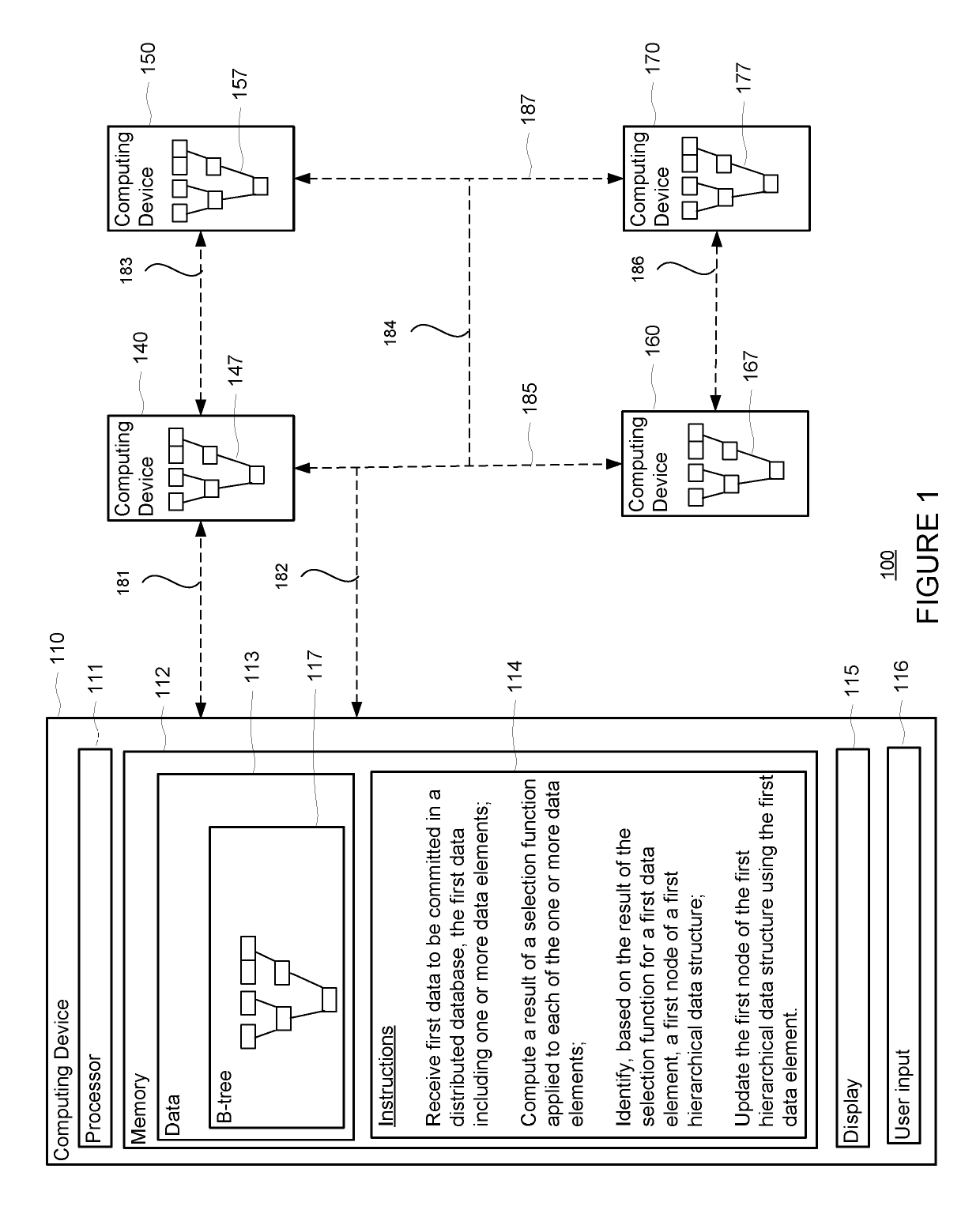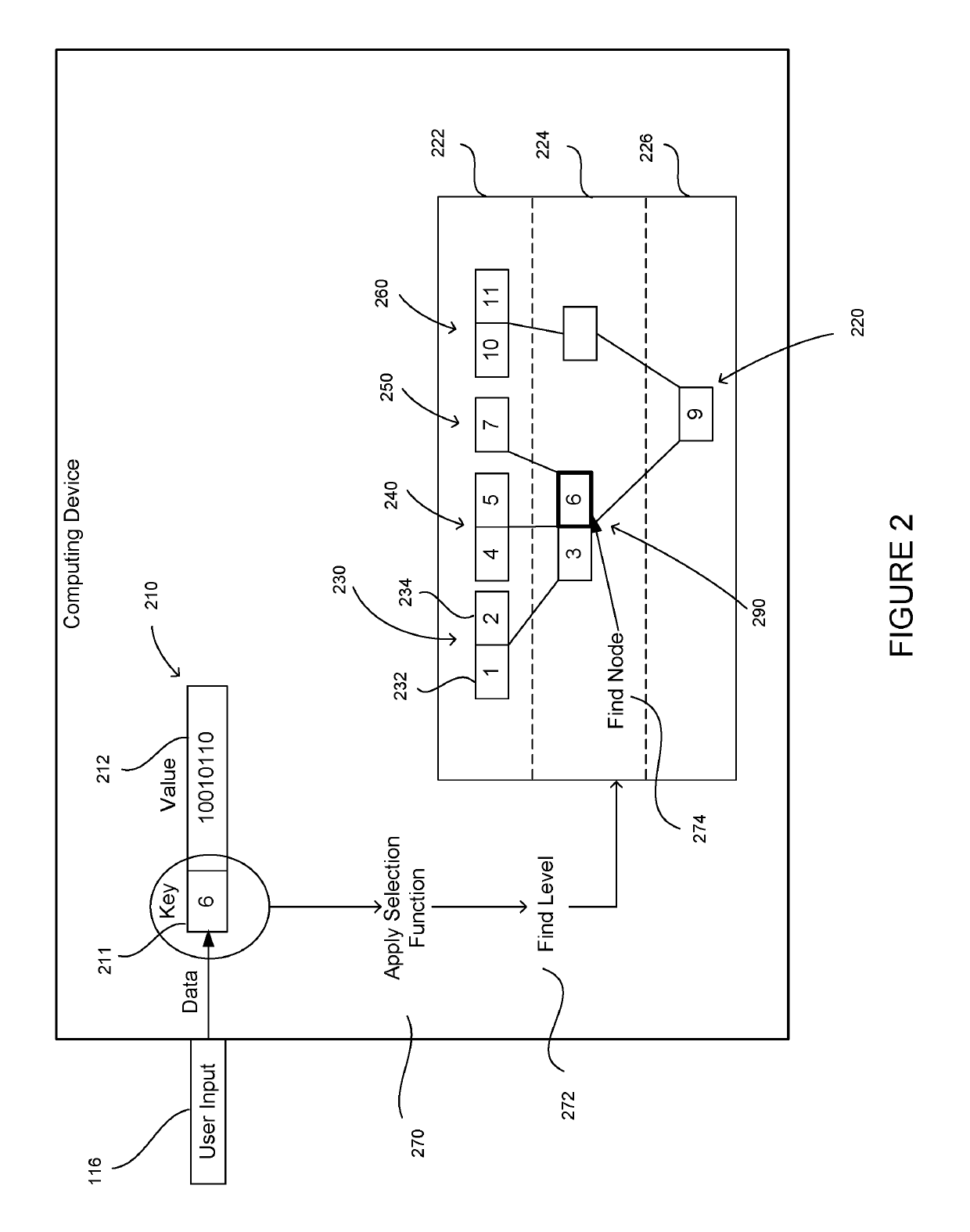Uniquely-represented B-trees
- Summary
- Abstract
- Description
- Claims
- Application Information
AI Technical Summary
Benefits of technology
Problems solved by technology
Method used
Image
Examples
Embodiment Construction
Overview
[0023]This technology relates to uniquely represented hierarchical data structures, such as B-trees, which are used to store sorted data for efficient access. A B-tree is updated using a cryptographic hash of a data element to be inserted into the B-tree or removed from the B-tree. A result of the hash indicates a node of the B-tree at which the data should be stored. In this regard, when a collection of computing devices each holds an identical B-tree as the other devices in the collection, modifications to any B-tree on any device are represented consistently, providing for synchronization among B-trees on the different devices. Additionally, adding or deleting a data element may require changing only one branch of the B-tree.
[0024]A system may be used for storing data in a uniquely represented data structure, such as a B-tree. A collection of computing devices may allow for the devices to communicate with one another. A copy of a database may be stored on each device. Eac...
PUM
 Login to View More
Login to View More Abstract
Description
Claims
Application Information
 Login to View More
Login to View More - R&D
- Intellectual Property
- Life Sciences
- Materials
- Tech Scout
- Unparalleled Data Quality
- Higher Quality Content
- 60% Fewer Hallucinations
Browse by: Latest US Patents, China's latest patents, Technical Efficacy Thesaurus, Application Domain, Technology Topic, Popular Technical Reports.
© 2025 PatSnap. All rights reserved.Legal|Privacy policy|Modern Slavery Act Transparency Statement|Sitemap|About US| Contact US: help@patsnap.com



